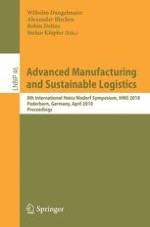Intimesofdecliningeconomicgrowth,companieshavetocontroltheircostsmore than ever to saveresources needed in the future. Regardless of the economic size of the company, the processes of production and logistics play a decisive role in stabilizing procedures and avoiding waste. Both are important cost drivers in manufacturing companies and therefore they o?er large potential savings. Pervasive networking in the last years has contributed to a hitherto unknown transparency of global markets. This harmonization opened up new possibilities of entering foreign markets for procurement and sales to the companies. The emerging global procurement strategy was understood as a chance to rethink the relocation of existing production facilities to pro?t from existing di?erences in price and performance as a resource-saving factor. Many companies tended towards a reduction of their vertical integration by outsourcing sections of their value chain. These contracted services of production result in higher transport volumes, increased complexity of supply processes and new requirements on - gistic networks. This trend of outsourcing has not stopped, but is slowing down noticeably. Additionally,thereisanincreasingproportionofcompaniesrestoring business units that were outsourced before. Reasons for turning back decisions are often to be found in missed goals. It is not unusual that important cost f- tors were disregarded in the original basis of decision-making. In the meantime many companies have realized that it is easier to achieve stability of processes and therewith a control of costs by increasing their own contribution to p- duction. Especially in times of under-utilized capacities like in the current crisis, insourcingcanbeastrategicoption.
